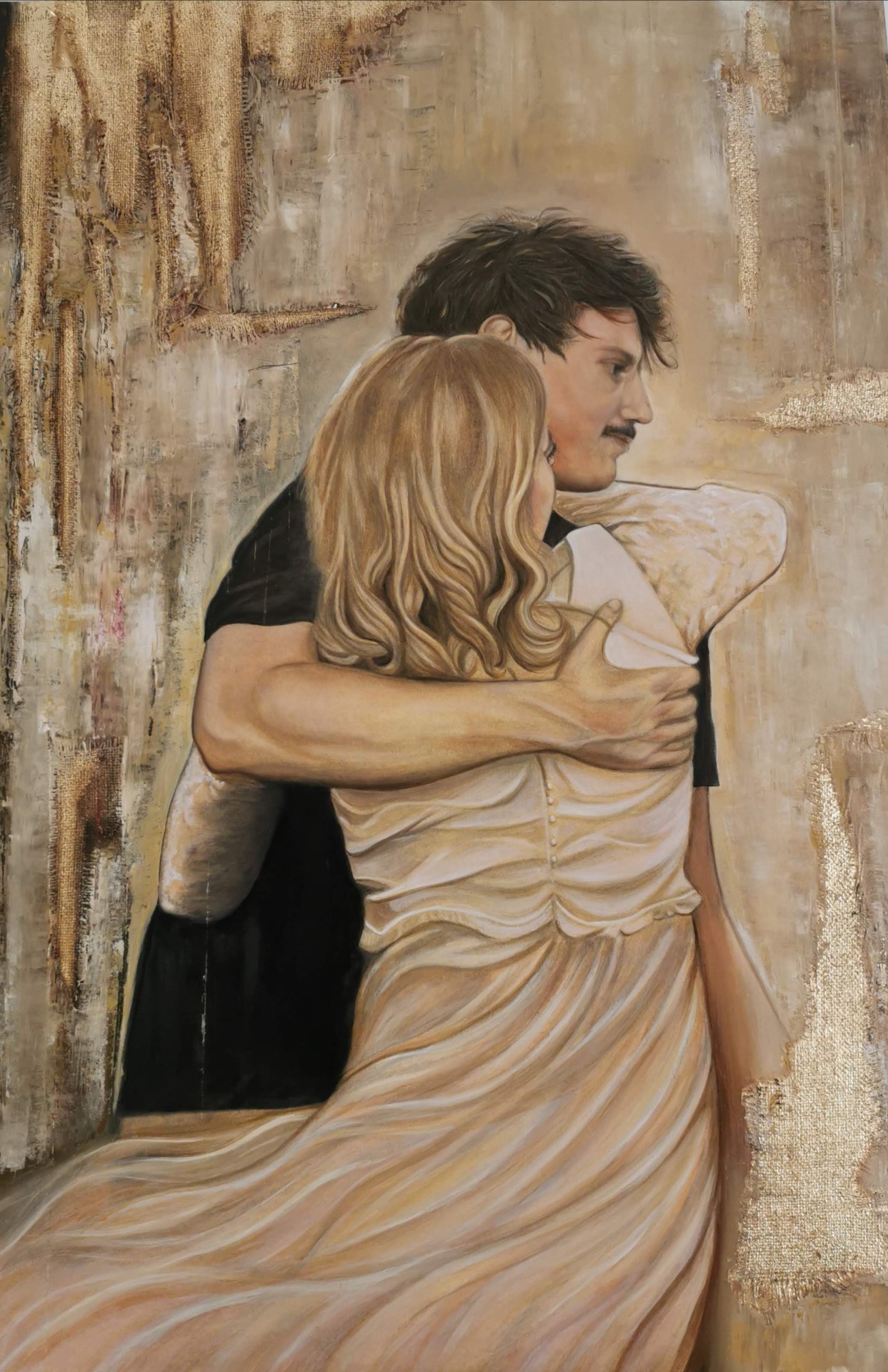Critical reviews

Francesca Callipari
Art critic and Art curator
Loredana Miolla moves between antiquity and the contemporary. With a natural propensity for research and knowledge, she shows off a refined and meticulous style, knowing how to combine the pictorial techniques of the past with a more "current" vision, giving her images an incomparable visual and emotional impact. From sacred figures, which stand out on a gold background or on carefully described landscapes, Miolla moves with dexterity towards the genre of landscape or portrait, seeking in each work a borderline dimension between spirituality and materiality. Static but at the same time strongly expressive, her characters, imbued with vitality and mysticism, fit into tight and impenetrable settings with the desire to quickly communicate with the onlooker, as demonstrated by the looks and poses of some saints.

In other works such as "Il vento nuovo" we delve, instead, into an almost furtive vision that immediately places us in a silent attitude. The protagonists of the painting, a man and a woman, placed in an unreal scenario that seems to merge inextricably with the plasticity of their bodies, are totally focused on their tender moment.
They turn their gaze towards an elsewhere that we can only imagine, surrounded by an aura of mystery. Once again operating a synthesis between ancient and modern, the artist decides to partially show us the man's face, hiding, instead, that of the female figure who turns her back to the observer, thus recalling a whole series of characters that have characterized many famous works in the history of art from the Middle Ages to the twentieth century. The two bodies, intertwined in a solid embrace, have an almost sculptural rendering, evident above all in the folds of the female dress that while evoking the movement of the wind suggest the idea of something immovable. A work with an almost cinematic edge that comes across as an exaltation of love that endures over time because, as the writer Henry van Dyke stated:
Time is too slow for those who wait, too fast for those who fear, too long for those who suffer, too short for those who rejoice... but for those who love, time is eternity.
Prof. Ruggiero Doronzo
Art historian
The art of Loredana Miolla is born from a long and prolonged study of Byzantine art, with a focus on Western art. In fact, Miolla prefers to create icons through a series of technical and spiritual steps, which arise from profound reflections and meditations. The Artist, in fact, prefers images of great human depth, arising from her sensitivity and her studies and insights into Christian culture.
Her figures arise from a hagiographic reading of the sources and the consequent interpretation of the Artist, capable of contextualizing them and placing them in an absolutely contemporary reading. I refer to the desire to insert the Child of Prague within a meadow, which leads well beyond, towards the city of Prague painted at the bottom left. This is linked to a profound Christological symbolism, which ranges from the most purely decorative elements to the Hebrew inscriptions, which run along the sides and lower part of the frame. The Infant of Prague, according to the usual iconography, is portrayed in a hieratic position and wears a sumptuous white robe with gold embroidery. He raises his right hand in blessing and with the other he holds the golden globe surmounted by the cross.
The name of Jesus itself, written in red on the chest, alludes to the blood shed by the child martyrs, becoming highly historically relevant if we consider the ongoing clashes in the Gaza strip. A little further down, a mystical lamb is lying inside a flower, alluding to the Book of Revelation sealed with seven seals. The branches and grapes symbolize respectively the Church, the Last Supper and the Passion of Jesus. The goldfinch also refers to the Passion, while the pomegranates are a symbol of fertility as indicated in Deuteronomy (8.8).
On the lawn we can see thistle flowers, which by their thorns allude to the crown placed on Jesus' head when he was mocked by the henchmen.
These are solutions that Loredana Miolla highlights because her art wants to be open to all and not at all elitist.
With Saint Lucy, Miolla represents a sober figure, but at the same time of an ethereal beauty, in which the light defines the pure face of the saint, which stands out against a golden background. It is an external light that shapes the figure of Lucy and gives her a harmonious narrative tone, capable of reaching the heart of the beholder and leading him to reflection. A reflection that always remains awake and vibrant like the flame that rises between the eyes of Saint Lucy, resting on the saucer, held in the right hand.
In her works, Loredana Miolla captures the essence of things in a vision characterized and guided by strong religiosity, which through art reaches the highest and most intimate results of the noblest emotions of the entire chromatic range of human feelings.
